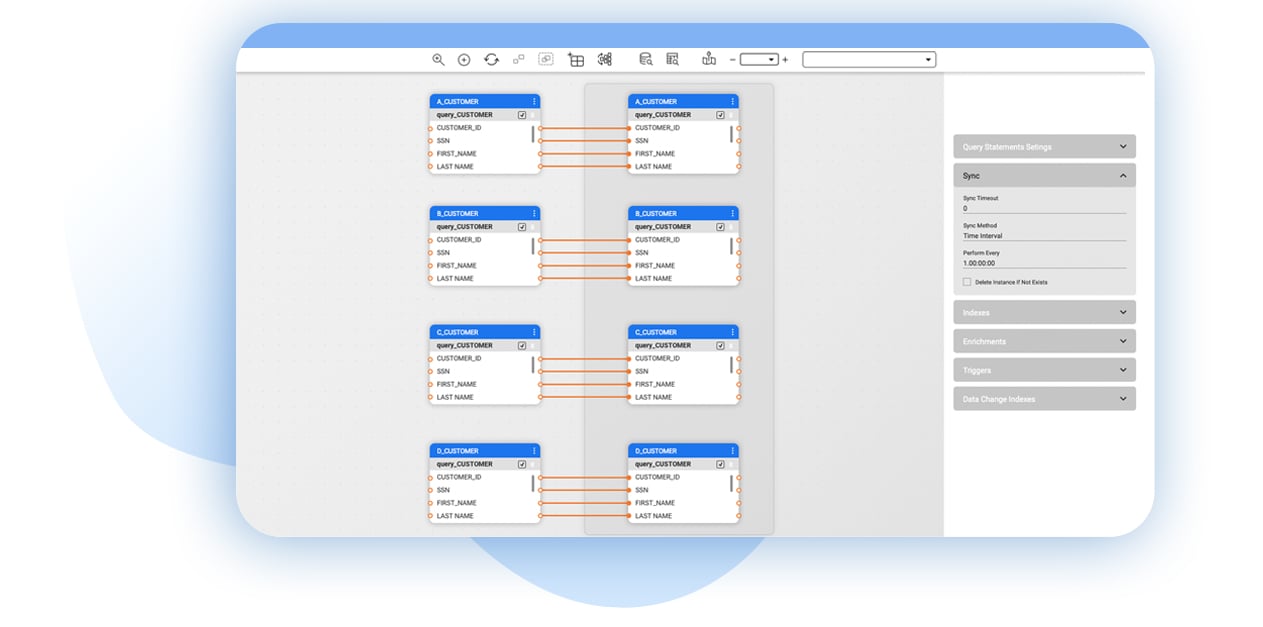Cloud-based digital transformation is making data migration software a key component for every enterprise. Here’s what to look for, and what to avoid.
Table of Contents
Why Enterprises Need Data Migration Software
What is Data Migration?
The Case for Data Migration Software
Top 6 Requirements for Data Migration Software
The Problem with Conventional Data Migration Software
Achieving Disruption-Free Data Migration with Business Entities
Why Enterprises Need Data Migration Software?
Today, thanks to the accelerated pace of digital business, and the general shift to cloud-based computing, enterprises need the ability to migrate massive amounts of data, at scale, without causing disruption or downtime to underlying systems.
Data migration software is designed to facilitate this transfer – but not all data migration tools enable the capabilities and business continuity that’s required. In this article, we’ll cover data migration basics, what to look for in data migration software, and how to avoid costly disruptionshem.
What is Data Migration?
Data migration is the process of moving data from one computing environments, data format, or storage system to another.
The data migration process begins with the identification, extraction, preparation, and transformation of data, and ends with its transference from one location to another. The final steps in the process involve validating the migrated data for completeness, then decommissioning it from the original systems.
There are 6 types of data migration:
-
Application migration
This is the transfer of data from one computing environments to another. Enterprises use application migration when they change application vendors or engage in legacy application modernization projects. -
Business process migration
Business process migration comes into play when business applications – and data on business entities, processes, and metrics – are moved to a new environment, such as during mergers and acquisitions or market expansions. -
Cloud data migration
Just as it sounds, cloud data migration is the process of moving data storage and applications to the cloud. -
Database migration
A database migration involves moving from one database management system (DBMS) to another, or upgrading a DBMS to a new version. -
Data center migration
Data center migration involves the complete transfer of the data center infrastructure to a different physical location – as well as the migration of data itself from old equipment to new equipment in the same data center. -
Storage migration
This type of migration refers to moving data from one data store to another, often following the implementation of newer technologies that improve performance and enhance scalability.
The Case for Data Migration Software
Enterprises today see data migration software as fundamental to modernization, innovation, and competition. Data migration is necessary for supporting a range of goals, such as:
-
Enabling digital transformation
Digital transformation involves adopting updated software versions, and transitioning them from legacy applications and data warehouses to more modern cloud-based software systems. -
Implementing a Post-Merger Integration (PMI)
A post-merger integration is the process of unifying two formerly distinct entities, including their data, in a manner that will create the greatest value for the future enterprise. Following a merger or acquisition, massive amounts of data must be migrated across formerly distinct business entities in order to streamline data management, data masking, and data governance. -
Adapting to privacy and security regulations
Enforcing data governance policies, and ensuring compliance with data masking tools, often requires migrating data to more modern systems or stores, which are designed with data protection in mind.
Requirements for Data Migration Software
Regardless of the primary business driver for implementing data migration software, effective data migration toolsshould include the following 6 capabilities and features:
-
Strategy support
Your software should support all data migration strategies, including phased, on-demand, and conventional big-bang approaches. -
Future-proof connectivity
Not only must your data migration software be able to connect with all your current systems, it must also be compatible with future systems, based on revolving business needs and use cases. -
Scalability
The right data migration software must be built to support current data volume limits, and have the ability to scale up, or down, quickly, to accommodate rapidly fluctuating data volumes. -
Security
The ideal data migration software should support a wide range of security measures, especially existing and emerging data privacy regulations, such as GDPR and CCPA. -
Speed
The right data migration software should be able to process data at high speed, in order to be able to convert massive volumes of data, in the quickest amount of time (hours, instead of days). -
Transformation
Today’s data migration software ought to be able to transform both structured and unstructured data, and support data fabric architecture, data mesh architecture, and data hub architecture, both on-prem, and in the cloud.
The Problem with Conventional Data Migration Software
Data migrations are complex, risky, expensive, and time-consuming – often taking days, or weeks, to migrate huge amounts of data.
With traditional data migration software, unexpected challenges inevitably arise, leading to disruption, driving up costs, and resulting in a poor experience for users of the new environment.
For example, if something goes wrong during the migration process, it's incredibly difficult to rollback, and restore the data to previous states. This further justifies the need for a phased strategy for big data migrations.
The problem with traditional migration tools is that they move data, one database table at a time. Depending on the criticality of the data system or store in question, this approach often requires a business to temporarily shut down.
Today, this kind of disruption, for any length of time, is unacceptable to enterprises that promise 24/7 access to its applications. Shutting down services, even over a national holiday, could lead to customer turnover, and poor business performance.
Achieving Disruption-Free Data Migration with Business Entities
Instead of disruptive, traditional data migration software, a new breed of technology enables swift, frictionless data migration at scale. A Data Product Platform takes an entity-based approach to data migration, using patented Micro-Database™ technology.
Unlike other data migration tools, Data Product Platform auto-discovers and matches data from multiple sources and operationalizes it as data products – corresponding to individual business entities (customers, vendors, or orders). And, based on data integrity by design, the platform keeps a record of all changes, in case a restore is required.
With support for phased and on-demand migration strategies, a business-entity approach does not require a risky big-bang migration. It also lets data teams segment the data, and define the migration phases, by entity segment (e.g., prioritizing VIP customers, or migrating only those customers who live in a certain area, etc.). This flexible approach seamlessly supports rollbacks, in case of an error during the migration process.
With a data product approach, connectivity, scale, speed, security, and transformation are all built in. The platform connects to all data stores, supports all delivery and data integration methods (e.g., batch data movement, data virtualization, or cloud integration services), and has built-in data orchestration, enabling inflight data transformation, enrichment, and dynamic data masking.
Finally, data teams can quickly migrate clean, complete, and trusted data that is ready for immediate use, without any disruption or downtime.













